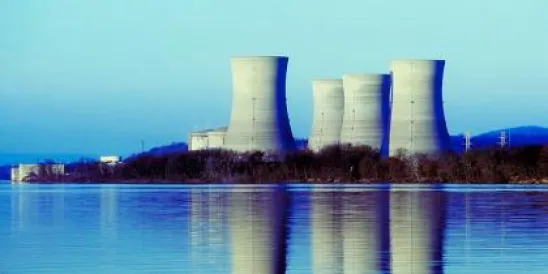The United States Supreme Court will hear a case this term to decide whether provisions of the Clean Water Act ("CWA") impose liability on activities that discharge pollutants through groundwater that ultimately reach surface waters.
The resulting opinion could present an unprecedented expansion of federal jurisdiction over groundwater nationwide under the CWA.
Issue Top of Mind in Federal Courts
In 2018, five separate opinions in three different federal Circuit Courts grappled with whether an activity that discharges pollutants is subject to the National Pollution Discharge Elimination System ("NPDES") permit program under the CWA if the pollutants pass through groundwater before reaching navigable waters. The CWA prohibits the "discharge of any pollutant" to navigable waters without an NPDES Permit. The CWA defines "discharge of a pollutant" as "any addition of any pollutant to navigable waters from any point source," and a "point source" as "any discernible, confined and discrete conveyance," such as a pipe, ditch, channel, or well. Earlier this year, the Fourth and Ninth Circuit Courts applied the CWA permitting requirements to situations where pollutants released from a point source migrate to navigable waters through groundwater, but the Sixth Circuit did not.
Last April, North Carolina activities became subject to this interpretation with the Fourth Circuit decision in Upstate Forever v. Kinder Morgan Energy Partners, L.P. An underground gasoline pipeline ruptured and spilled petroleum directly into groundwater. Kinder Morgan, the owner of the pipeline, made repairs and remediated much of the spill, but petroleum remained in the groundwater, migrating to wetlands, rivers, lakes and the Savannah River. Conservation groups brought a CWA citizen suit alleging the owner had violated the CWA for polluting navigable waters without an NPDES Permit. Although the federal district court in South Carolina dismissed the action, the conservation groups appealed. On appeal, the Fourth Circuit held that the CWA does not require a discharge from a point source to be directly into navigable waters for a violation to occur if a "direct, hydrological connection" exists between the groundwater and the receiving surface water. If groundwater is a conduit for pollutants to travel between a point source and surface water, NPDES permit requirements of the CWA are triggered.
The Kinder Morgan decision followed Hawai'i Wildlife Fund v. County of Maui in the Ninth Circuit. Maui County discharged its treated municipal wastewater into groundwater through deep injection wells as a part of the County of Maui's permitted wastewater treatment plant process. Some wastewater would escape through seepage and emerge in the Pacific Ocean. Several organizations sued the county for discharging effluent through groundwater into the ocean without an NPDES Permit. The district court agreed, and on appeal, the Ninth Circuit affirmed that an indirect discharge from a point source into a navigable water was sufficient for CWA liability to attach because the pollutants were "fairly traceable" back to the point source.
By September there was a flurry of additional CWA activity in the Fourth and Sixth Circuits. First, the Fourth Circuit applied its conduit theory from Upstate Forever to seepage from coal ash landfill and settling ponds in Sierra Club v. Virginia Electric Power Co. Ultimately, the court ruled that NPDES permits were not required because the landfill and settling ponds were not point sources under the CWA since pollutants flowed through groundwater diffusely rather than in a discernable, discreet manner.
Then, the Sixth Circuit took an entirely different position than the Fourth and Ninth Circuits. In Kentucky Waterways Alliance v. Kentucky Utilities Company and Tennessee Clean Water Network v. Tennessee Valley Authority, which involved citizen suits targeting leaching coal ash ponds, the Sixth Circuit specifically rejected the indirect and conduit theories favored by the Ninth and Fourth Circuits. The court instead interpreted the CWA to require a direct discharge of a pollutant from a point source and found groundwater to be neither defined nor discrete, but diffuse. Although groundwater may convey pollutants, it is not a point source regulated by CWA. Further, the Sixth Circuit rejected the theory that the NPDES program applies to a pollutant passing through a nonpoint source conduit before reaching navigable water because the CWA addresses only pollutants discharged into or added to navigable waters from a point source.
Federal Government Weighs In
Both Kinder Morgan and the County of Maui filed petitions for writ of certiorari asking the Supreme Court to resolve the conflict between the circuits on the definition of "discharge of a pollutant." Briefing was completed in November, and in December the Court asked the U.S. Solicitor General to provide the view of federal government on whether the CWA imposes liability on activities that cause pollutants to be conveyed through groundwater before reaching navigable waters.
In its January 2019 amicus brief, the Solicitor General recommended the Court grant review of the County of Maui's petition on the sole question of whether "discharge of a pollutant" occurs when a pollutant is released from a point source, travels through groundwater, and ultimately migrates to navigable waters. The Solicitor General suggested the Ninth Circuit opinion provided clearer facts and a cleaner procedural history for the Court to consider over Kinder Morgan where the pollutants traveled by soil and groundwater and there are questions over the CWA requirement for citizen suits to address only ongoing violations.
The Solicitor General articulated a need for resolution of the appellate split over whether a CWA-prohibited "discharge of pollutant" occurs when pollutants released from a point source into groundwater migrate to navigable waters. Many district courts that deal with many pollutants and point sources are hampered by the unresolved question of the role groundwater in NPDES coverage. This uncertainty exposes regulated parties to critical risk in significant civil and criminal penalties as well as other potential loss.
On February 19th, the Supreme Court granted the County of Maui's petition, effectively putting a hold on Kinder Morgan's petition pending its decision after it hears the Ninth Circuit appeal this fall.
Conclusion
Many industries have a stake in the reach of the CWA and how the EPA and courts resolve its application to groundwater. In February 2018, EPA requested comment on whether discharges that reach jurisdictional surface waters via groundwater connection may be subject to CWA jurisdiction. The Solicitor General's amicus brief noted that the EPA expected to take action in the coming weeks based on the review of comments received. Agency guidance may be tabled given the Supreme Court's decision to take on the issue in its 2019 term.
The potential impact could be wide-ranging, particularly in eastern North Carolina where agriculture is a driving economic force and the groundwater table is relatively shallow. For many years, environmental interest groups have targeted farming operations with animal waste lagoons in this area by filing citizen suits in the Eastern District and asserting that unpermitted seepage from such lagoons constitutes a violation of the CWA by adversely affecting groundwater and, through groundwater, navigable water. Meanwhile, the North Carolina Department of Environmental Quality revised its permits for Concentrated Animal Feeding Operations, considered point sources under the CWA. The state agency is holding public meetings and receiving comment that may reflect support of the groundwater conduit theory. Statewide this issue continues to be watched closely.




 />i
/>i

